The death of the artist Duggie Fields on 7 March aged 75, following a long battle with cancer, deprives London—and beyond—of one of its most stylish and original figures, loved by many, including me. With his skinny, sharply tailored single-breasted suits, trademark kiss curl and eyebrows pencilled into demonic peaks, Fields cut a distinctive dash. Both the artist and his paintings shared an unmistakable look that was part punk, part pop, part fifties retro with a distinct dash of the Surreal. It was an idiosyncratic, instantly recognisable signature style from which Fields never departed.
Encountering such an immaculately constructed persona might have been daunting, but in person Fields was anything but. He was kind, witty and phenomenally well informed on everything from Old Master paintings to the latest in digital technology. I remember an erudite encounter a couple of years ago in front of a Raphael cartoon at the Royal Academy’s Charles I show. For all their graphic snappiness, his paintings are considerably more complex and considered than some sniffy critics have suggested, offering up a post-modern smorgasbord of motifs from art history and pop culture with wit and panache. "Maximalism" was how Fields defined his aesthetic and from the mid-90s onwards he expanded into digital animation, music and films, all made on his computer. Some of these vivid moving image works were shown by the British Film Institute (BFI) in 2016 as part of the LGBTIQ+ film festival Flare.
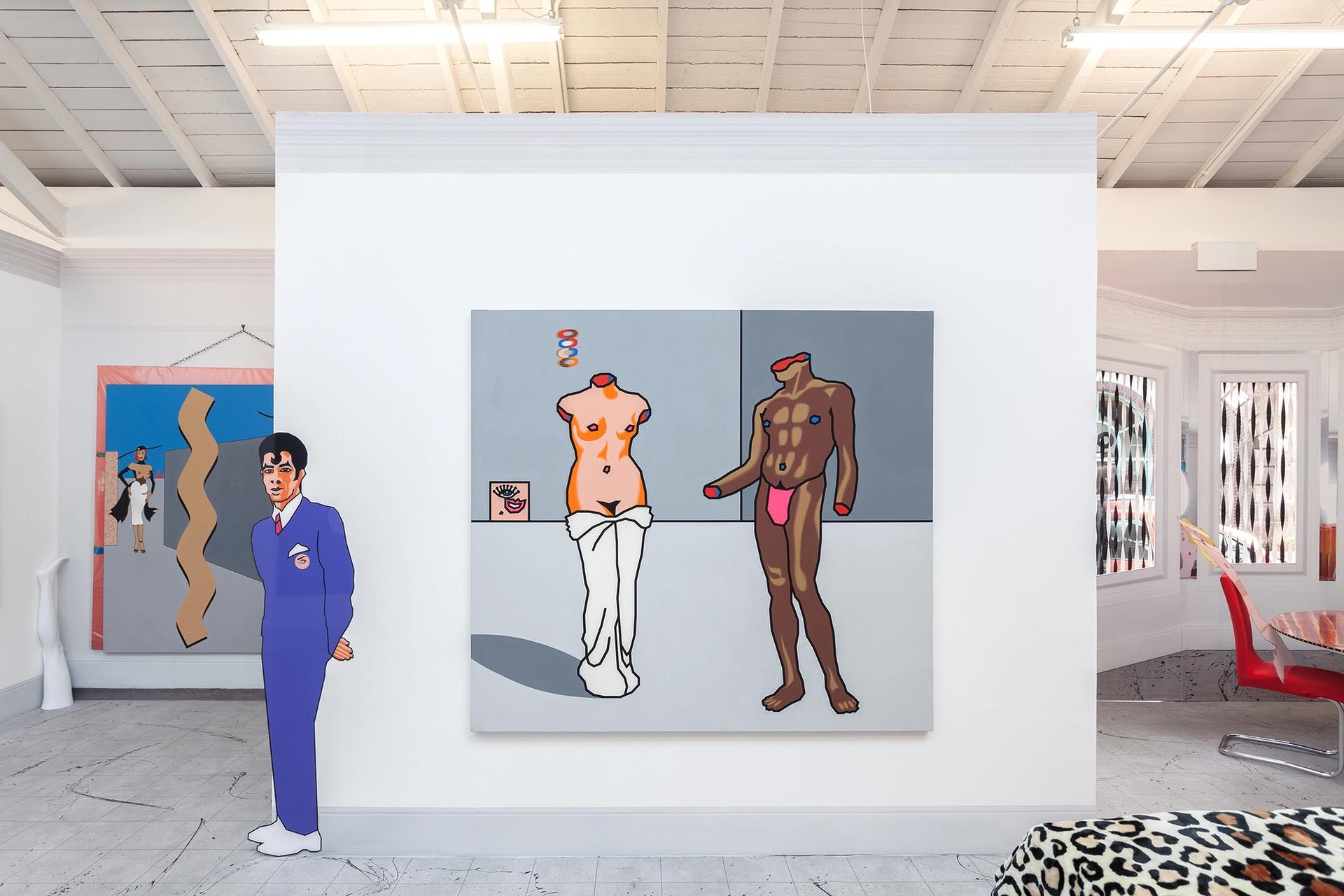
Installation view of Duggie Fields's 2018 exhibition at the Modern Institute in Glasgow © The Modern Institute
Duggie Fields was born in Salisbury, Wiltshire and spent his childhood first in Hampshire and then in Hertfordshire where his father owned pharmacies. Fields remembers being fascinated by the cosmetics advertisements that decorated his father’s shop. This love of glamour never left him. He briefly studied architecture at Regent Street Polytechnic which he claimed left a legacy in the immaculately constructed compositions of his work : “all my paintings are about geometry” he once declared. But the lure of the King’s Road proved stronger and he transferred to the Chelsea School of Art for four years, starting in 1964, where he was a regular fixture at fashionable parties and events around the King's Road scene. Fields left Chelsea with a scholarship that took him on his first visit to the United States, in 1968. On his return from America, he went to live in Earl’s Court Square and shared a flat with Syd Barrett, who had just left Pink Floyd. When Barrett moved out, Fields remained, living and working in the same apartment for the next fifty years.
I first met Duggie Fields when I came to London in the early 1980s. He was part of a high-glam, close-knit posse which included the designer Zandra Rhodes and the sculptor and cultural impresario Andrew Logan, at whose Alternative Miss World extravaganzas Fields was a regular attendee. The group also included Chelita Secunda, the journalist and fashion stylist who gave Marc Bolan his glam rock look, the late filmmaker Derek Jarman, and the painter Kevin Whitney, who was the official artist for the Olympic games in 1982. Another key figure was the painter Luciana Martinez de la Rosa, model and muse to all of the above, who appears repeatedly in Field’s paintings, usually baring a rouged nipple.
At this time Fields was riding high. He’d just come back from a triumphant solo show in Japan sponsored by the multinational cosmetics company the Shiseido Corporation and accompanied by a television, billboard and subway advertising campaign that had made him a national superstar. Back in the UK he regularly featured in The Face and i-D magazine, and over the years, although the art world was less consistent in its support, he continued to be appreciated by the world of music and fashion. He looks suitably devilish in gold face paint, pointed eyebrows and kiss curl in place, playing Avarice in the Petshop Boys 1987 video for "It’s a Sin", and he went down the runway as the face of Comme des Garçons 2007 menswear collections. Fields also performed with French musician Etienne Daho and as recently as Christmas last year he featured in a film for Selfridge’s seasonal window display, clad in Gucci and making minimal dance moves in front of a Christmas tree.
Fields always declared that he made no distinction between his art and his life, and he put this philosophy fully into practice. Not only did he look as if he had just stepped out of one of his crisply-executed canvases, but the legendary Earl’s Court flat that was his home and studio for half a century was also a three-dimensional expression of his maximalist vision. Its eclectic theatrical interior was immortalised by Derek Jarman in the 1974 film At Home with Duggie Fields and Fields himself described his daily existence as “living inside a painting”.
He was therefore delighted when this apartment was lovingly recreated—mannequins, customised Ken and Barbie dolls, stacks of canvases, leopard print soft furnishings and all—for an exhibition at The Modern Institute gallery during the Glasgow International festival in 2018. The Glasgow show marked a key moment in a revival of interest in Fields and his work, which had been kick-started by a solo show at Duovision gallery in Liverpool in 2012, his first in the UK in 30 years.
The exposure led to him being taken up by The Modern Institute and this new association was crucial in re-introducing Fields to the contemporary art world where he was enthusiastically received by new audiences. But as happy as he was with his new recognition, this resolutely uncompromising artist also remained steadfastly loyal to his old milieu, just as he never departed from the coolly idiosyncratic combination of sharp outlines, quirky details and blocks of brilliant colour that made him and his work so consistently recognisable for more than half a century. “I’ve always been on the outside wherever I’ve been,” he said, “I’m happy with that role, it means I’ve survived!”
Tributes
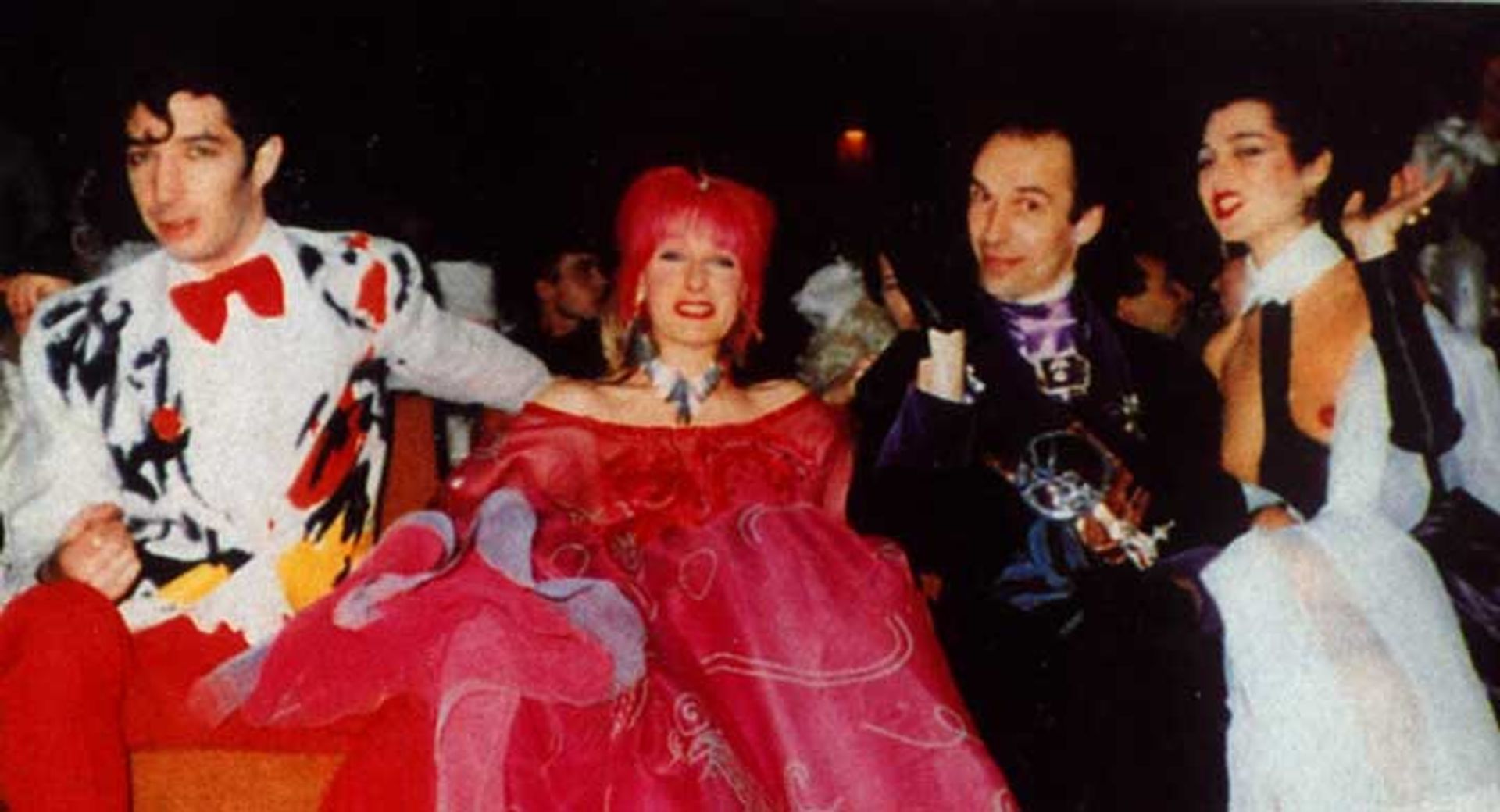
Duggie Fields with Zandra Rhodes, Andrew Logan & Luciana, at the Alternative Miss World film premiere, Vogue April 1990 © Duggie Fields
Andrew Logan, Artist
“We were blood brothers, really. We both loved humour and we loved glamour and these are rather frowned on by the art world, so we felt like partners in crime. We’d talk and talk on the telephone about work, life, gossip and everything—Duggie was a great lover of the telephone and you’d have the whole gamut of life when you talked to Duggie.
People always think his paintings are very one-dimensional because they’re very graphic. But actually the paintings are extraordinary. Because he never sized his canvas they were built up layer after layer: eight, 10, or 12 layers. The richness of the paint is absorbed in the canvas and it gets richer and richer. And it's a joy. I remember going to the studio and seeing him start off with pale-ish kinds of colours. But as the as the canvas grew , these colours emerged. I think Duggie was a brilliant artist. Just thinking of him adding those layers and then refining, and then adding more layers and then refining again, I find it so exciting—it sends shivers up my spine. It's not like a Bacon where you can immediately see the 'whoosh', but it’s there. To me, Duggie’s work embraces the classical, the surreal and the contemporary, so it really is beyond time. But at the same time he was able to incorporate time in all those paintings. He really was unique.”
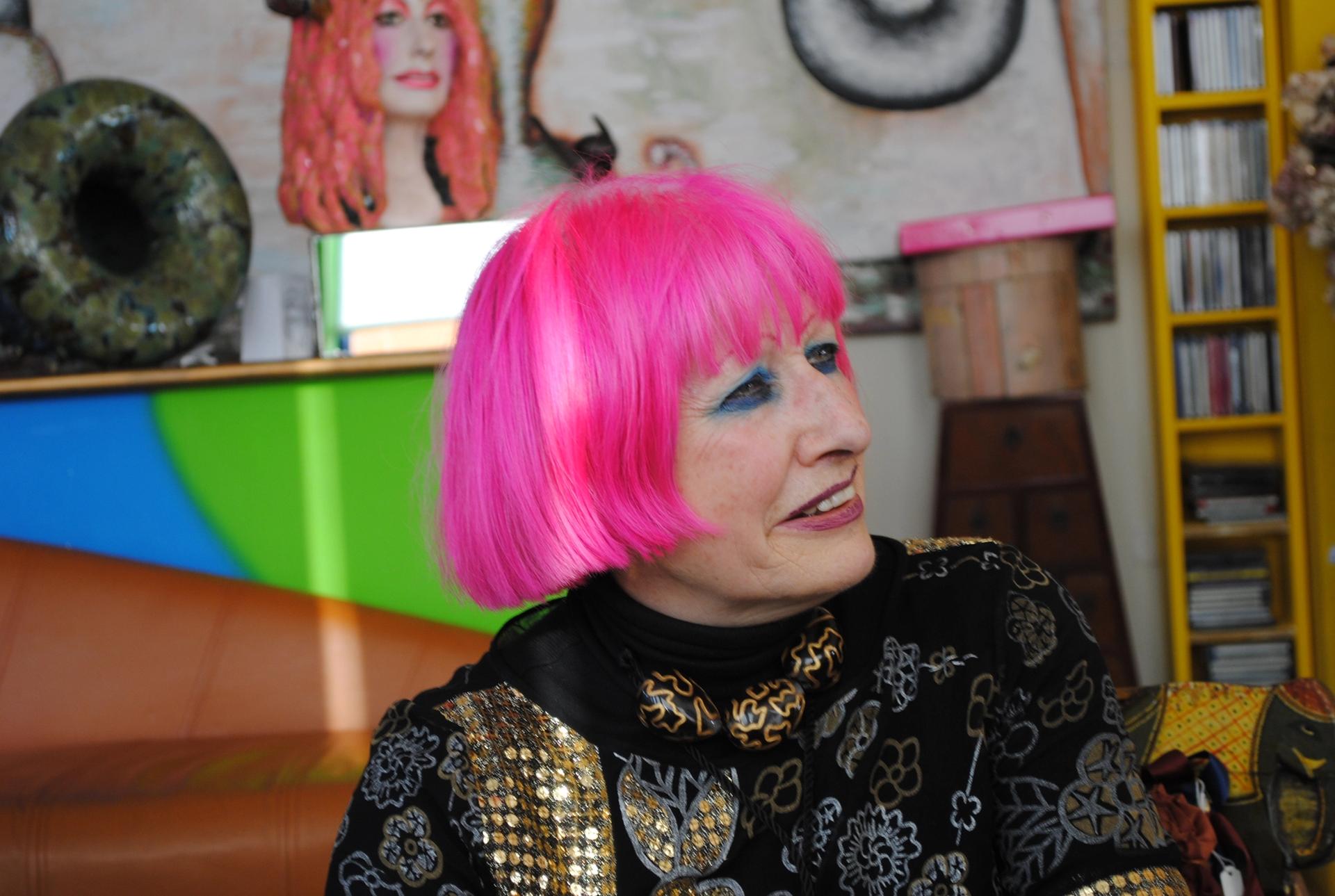
Fashion designer Zandra Rhodes WikiCommons
Zandra Rhodes, designer
“Duggie was such an individual and an original thinker. I spoke to him every day, wherever I was in the world, we’d always keep in touch. It was him that came up with the name for my conceptual chic punk collection in 1977. I was first introduced to him by Chelita Secunda who took me to his flat. There I completely fell in love with this wonderful landscape painting. It was right at the beginning of my career and I didn’t have much money so I paid him a deposit—it was the first painting I ever collected, and I still adore it. I use it like an artificial window, it’s about five foot square and now whenever I do Zoom calls it sits behind me as the background. He never changed, he always looked like Duggie, but he didn’t look like he was in a time warp. He was a very individual person who was synonymous with his work- everything was all meshed into one. He didn’t ever compromise and it pisses me off that they never made him an RA.”
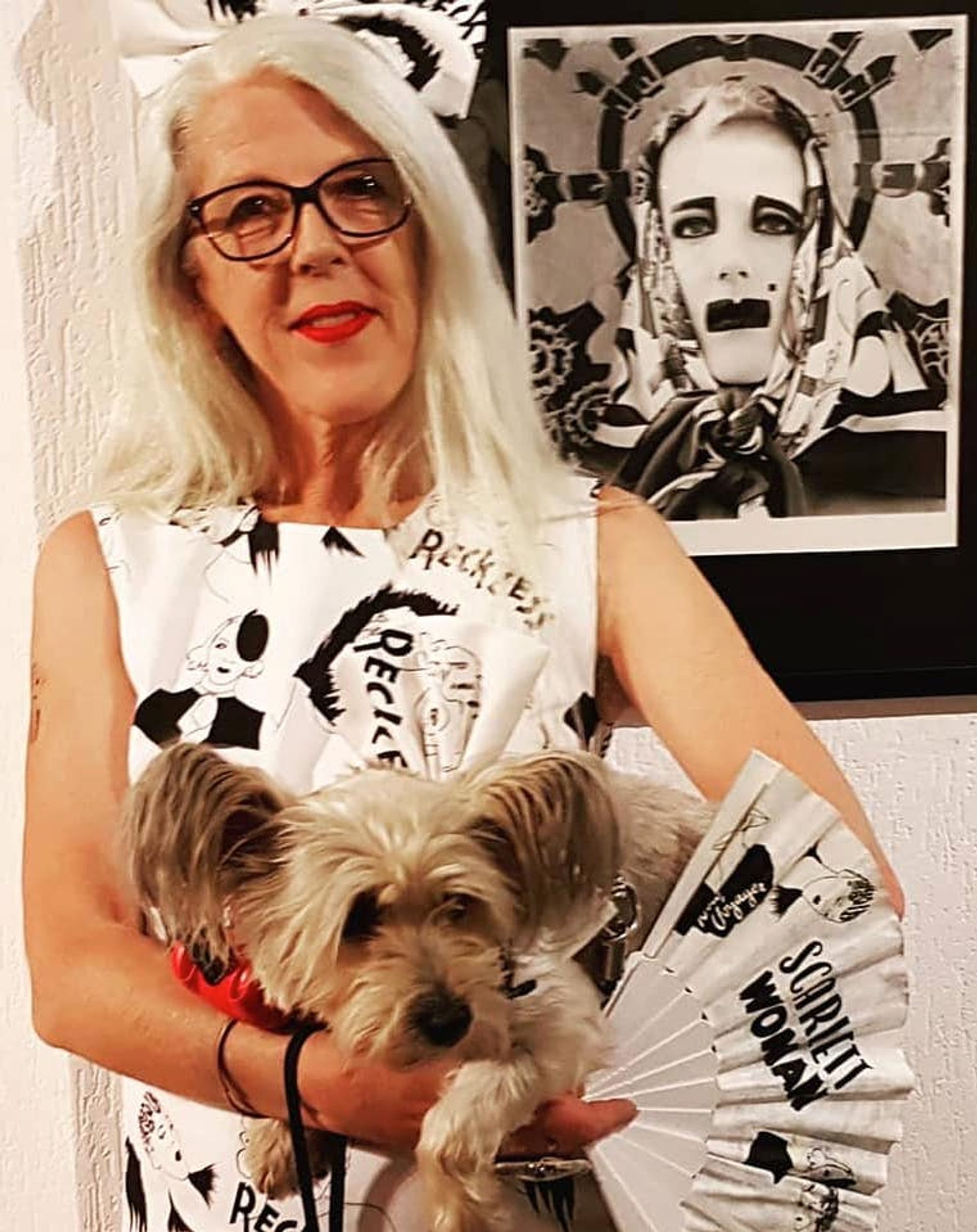
Scarlett Cannon at The Gallery, Liverpool
Scarlett Cannon, model and writer
“Duggie will be enormously missed. He had a generosity of self, particularly with creative younger people, taking them under his wing, passing the baton to the next generation to take forward. There's not too many like this left, and now there is one less. He was a true artist and a gentleman.”
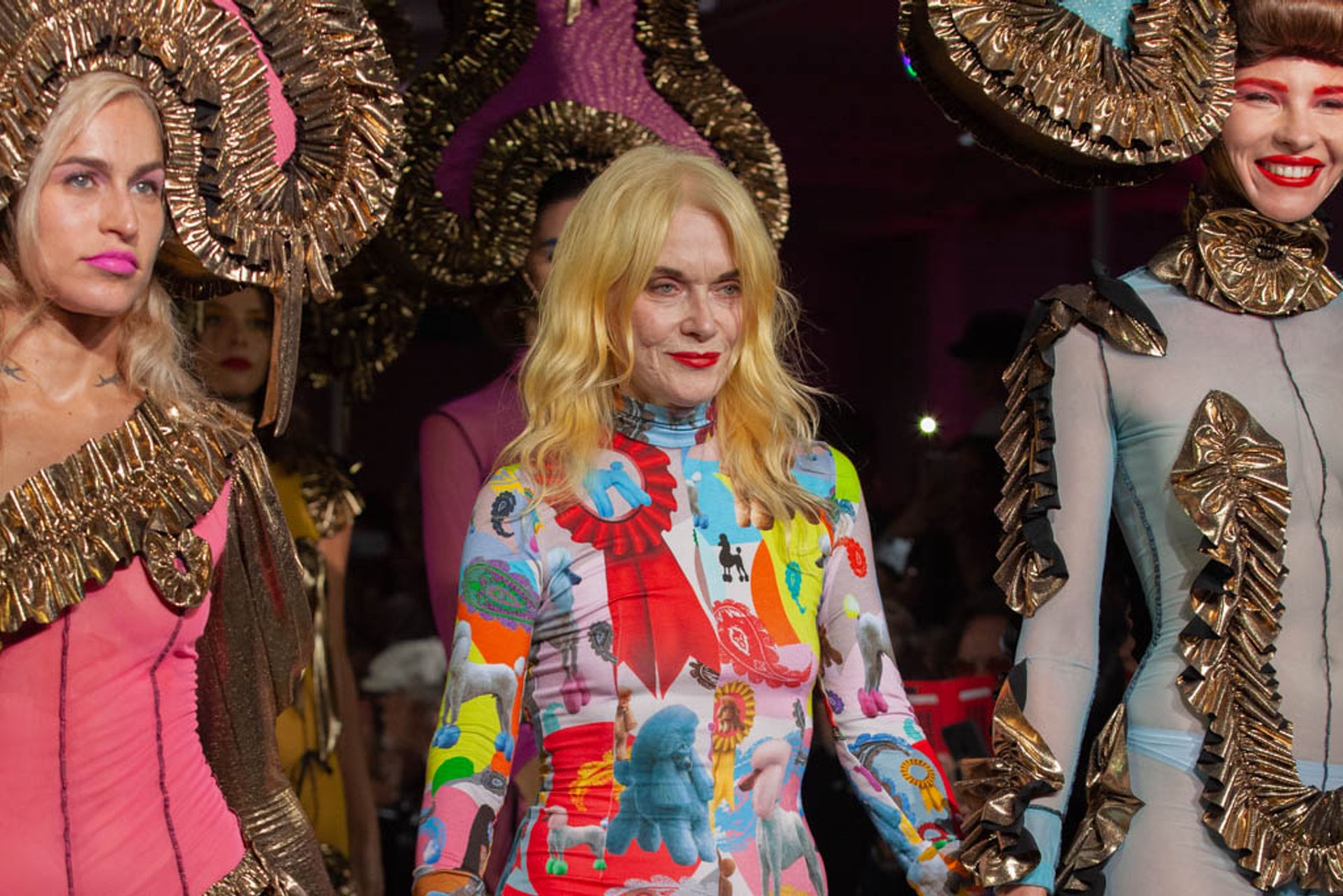
Pam Hogg at her Spring Summer 2020 show © The Upcoming
Pam Hogg, designer
"Duggie was as unique as his art. I first caught sight of him at Cha Cha’s early eighties, he had such an intriguing look and so at ease standing on his own looking my way. I'd have loved to have approached him, but in my shyness his aura of self belief was terrifying.We connected a few years later after a series of crossfire knowing smiles, eventually bonding around 1985 after his longtime friend and muse Luciana Martinez and I became best friends.
I met him before I ever knew his art, but they were one and the same. I saw his paintings for the first time in his Earls Court flat scattered amongst splashes of colour and objects knowingly positioned to impress, it was his gallery, he lived his clarity of raw pop perfection.Over the last 10 years he had many times expressed his dissatisfaction and disappointment with the higher echelons of the Art world who he felt simply ignored him, but he carried on nonetheless.
In a genius move The Modern Institute of Art in Glasgow recreated his home. It was a show that blew his mind. He was there in person everyday welcoming everyone in, a dream come true. In the past year he'd been posting and reposting images of this show and anything that bore his name, face or artwork to a point I could hardly bear, recognising with sadness an immense desperation.
Till his last dying breath all he dreamed of was a grand show in a renowned gallery like the Tate. It was painful to see him in this light as he deserved all the attention he craved, ironically he'd have loved all the attention he's getting now."
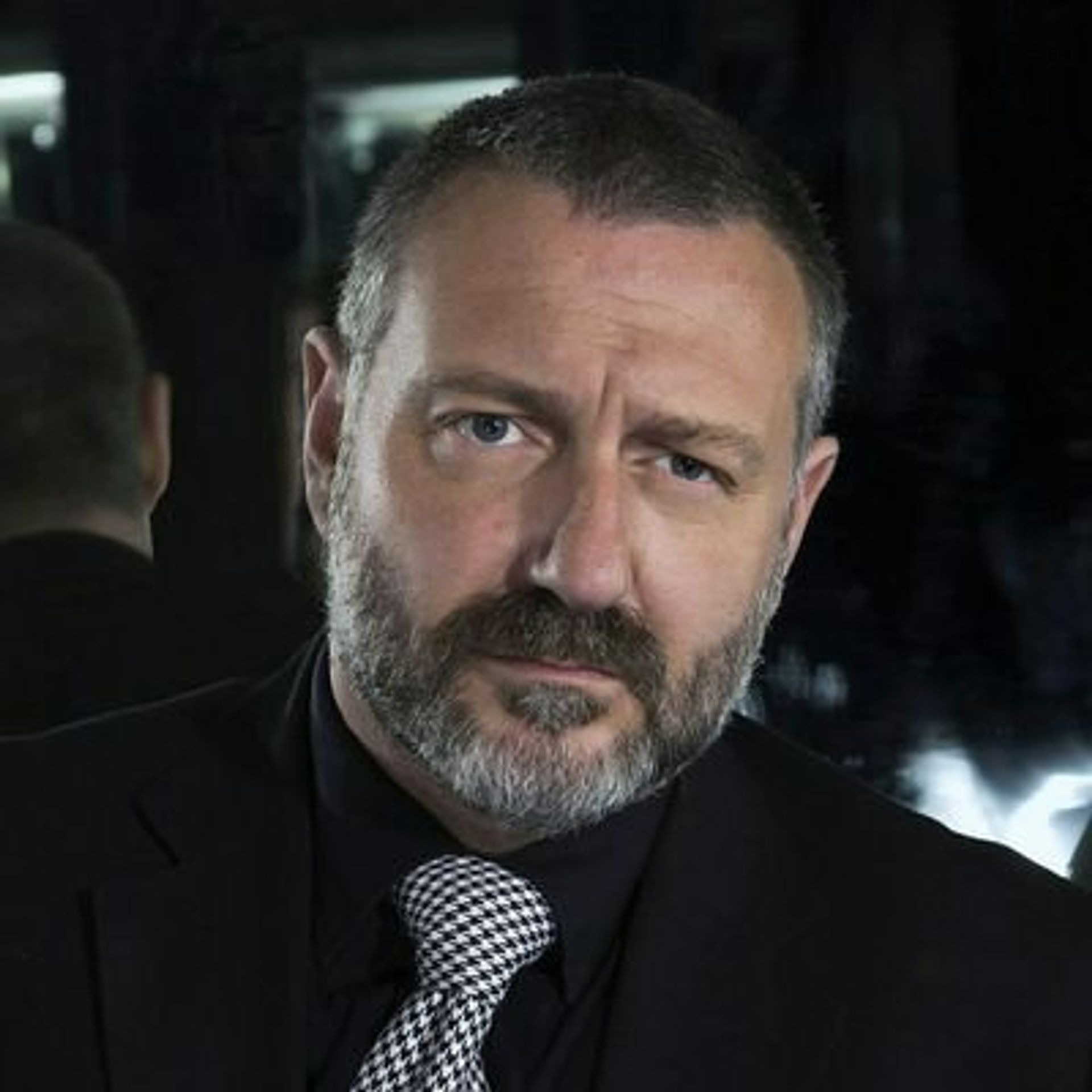
Martin Green, DuoVision
Martin Green, DJ, curator and co-director, Duovision
"Duggie was an inspiration in his art, style, attitude and vision. I'd been a fan for many years before finally working together in 2012. During a visit to V&A, James Lawler and myself were dismayed at Duggie's omission from their Post Modern exhibition as we felt he epitomised the genre. Compelled by this exclusion, we immediately offered him a solo show in Liverpool. It was our first as Duovision and his first for over 20 years.
Welcome To My World was a vibrant explosion of Pop Maximalism and instantly engaged with a diverse audience. This response inspired us to work with other older neglected LGBTQ artists, many of whom Duggie suggested. His taste was impeccable and his support generous and unwavering. Back then, I thought Duggie would at last achieve enormous recognition. But it didn't happen. How could someone so original, influential and distinctive be ignored for over 50 years. He claimed it was because he never compromised. But then why should he? He was a fucking artist!! And one of the greats."
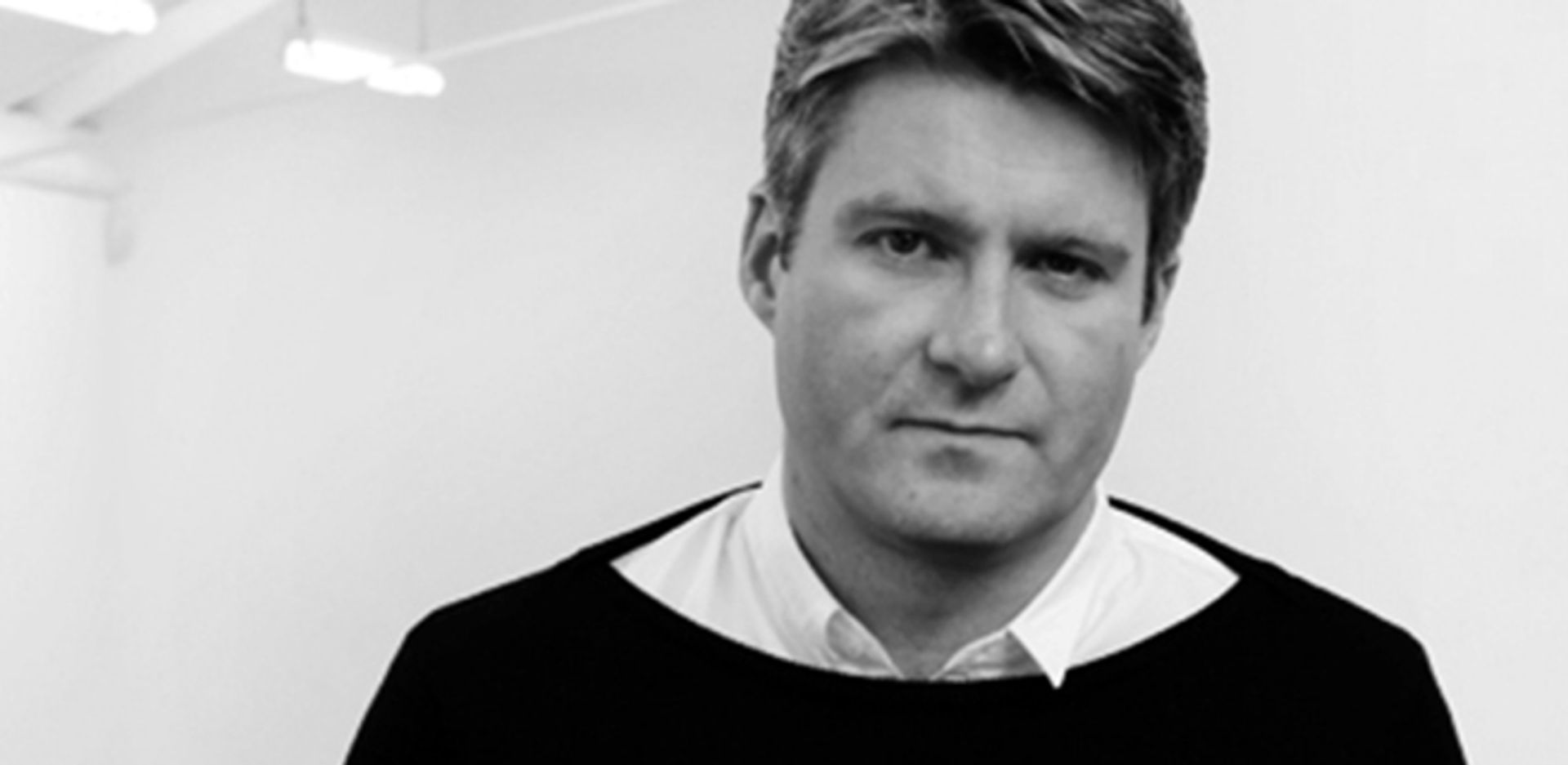
Tony Webster Photo: Michael Jones
Toby Webster, founder, The Modern Institute
"I was first introduced to Duggie in 2016 by Martin Green from Duovision who I met after Keith Warren had recreated 'Smashing', his club from the 90s as his 50th party in Northumberland. Martin talked about the Division show in Liverpool which he’d just made and kindly set up a meeting. Duggie was an artist I’d admired since having a page from The Face about his work collaged onto my bedroom wall in 1985 when I was 15. Meeting Duggie was always a pleasure and visiting him in his apartment was a great experience. He agreed to make the show in the gallery for 2018 and even liked our idea of recreating his Earls Court flat, which I was initially nervous about suggesting. He was so much fun: quick witted and precise, all elements which are at the forefront of his works. His paintings of friends and associates have an amazing depth both physically and personally. Duggie’s work is timeless, he is an important pioneer who I feel deserves an important place in the history of art in the UK."



